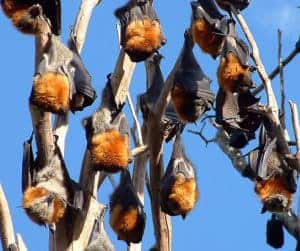
Hendra Virus: An Unprecedented Australian Outbreak
Australian health authorities are dealing with an unprecedented number and distribution of hendra cases.

Australian health authorities are dealing with an unprecedented number and distribution of hendra cases.

Stem cells for treatment of equine orthopedic injuries has recently received increased attention.

Antigenic drift necessitates periodic vaccine updates to effectively combat new virus strains.
Horses in the Northeast, mid-Atlantic, and near the Great Lakes are at risk of Borrelia burgdorferi exposure.
The International Collating Center, Newmarket, United Kingdom, and reported the following disease outbreaks.
James MacLeod, VMD, PhD, shares his views on stem cells and regenerative medicine in equine medicine.
Have you ever wondered how antimicrobial susceptibility testing works? Erdal Erol, DVM, MSc, PhD, of the Gluck

Biosecurity among show horses has been front page news lately. Summer months are prime time for organized
It is time for equine veterinarians, owners, and stakeholders to become effectively engaged in preventing
Equine piroplasmosis (EP) is a tick-borne disease detected in isolated outbreaks in the United States within
The International Collating Center, Newmarket, United Kingdom, and other sources reported the following
Glanders, caused by Burkholderia mallei, is a highly contagious bacterial disease in equids and is widely
With sick animals, people often think negative diagnostic results are “bad” results since the cause of disease is still unknown. However, we would do well to remember Thomas Edison’s mindset: “I have not failed. I have just found 10,000 ways that
Ticks are not only unsightly, they also can transmit infectious diseases such as ehrlichiosis, Lyme disease, and piroplasmosis to horses. Severe infestations can cause skin irritations and even anemia (a decrease of healthy red blood cells).
During the 2010 calendar year, 95,384 serum samples were tested for equine infectious anemia (EIA) in Kentucky with no positive animals being discovered. Of these, 84,111 samples were collected and tested to comply with state regulations governing
International reports of contagious equine metritis, equine herpesvirus, equine influenza, strangles, equine piroplasmosis, equine arteritis virus, Eastern equine encephalomyelitis, West Nile virus, salmonella, and more.
Stay on top of the most recent Horse Health news with